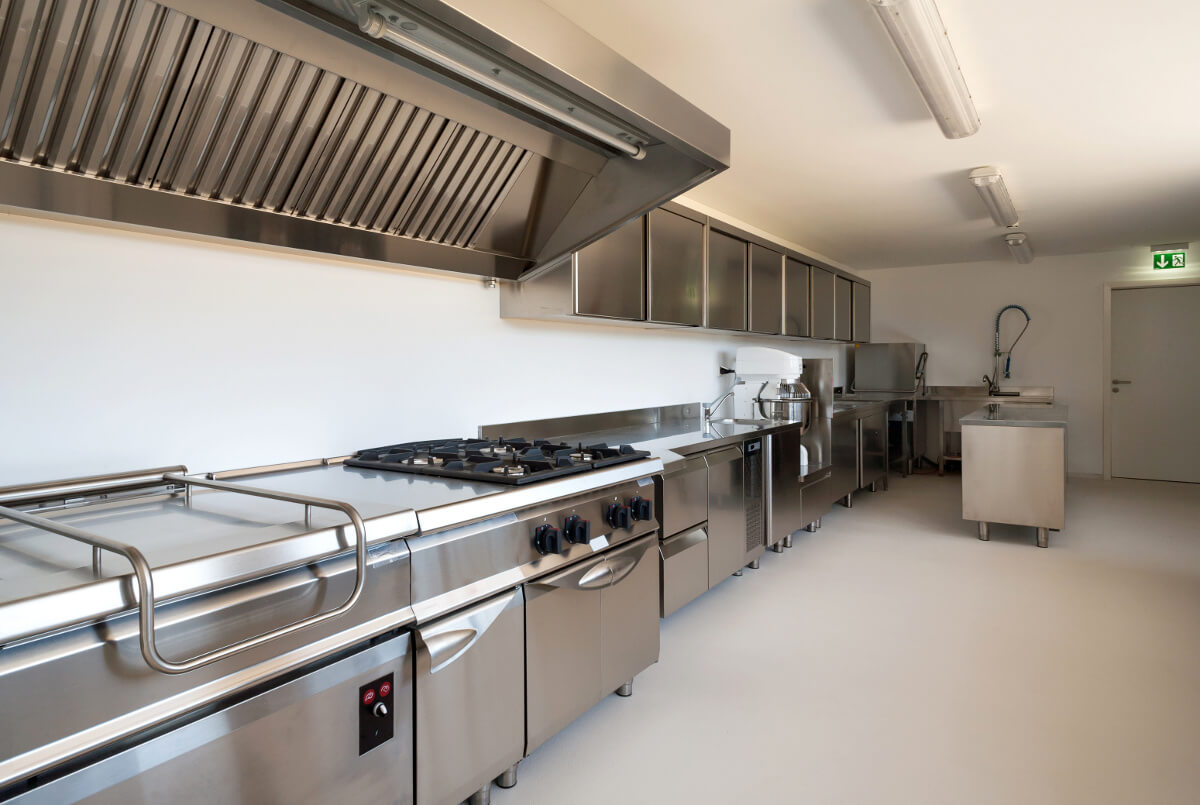Kitchen Suppression Systems

Quality Kitchen Suppression Systems
for Homes & Businesses
At All American Fire Protection, we understand the significance of safety, especially when it comes to the heart of your home or business – the kitchen.
Our Kitchen Fire Suppression Systems are designed to offer optimal protection against unexpected fire hazards, ensuring peace of mind and security.
Every year, kitchen fires account for significant damages, both residentially and commercially. These incidents can lead to loss of property, injuries, or even fatalities. A robust fire suppression system acts as the first line of defense, safeguarding lives and assets.
Residential Kitchen Fire Suppression Systems
Features
Compact Design
Integrates seamlessly with home aesthetics.
Quick Response
Detects and suppresses fires in seconds.
User-friendly
Minimal maintenance and easy-to-understand operation.
Benefits
Protection
Protects your loved ones and assets.
Reduced Costs
Reduces potential repair costs after a fire.
Increased Value
Increases property value with added safety features.
Installation Process
Step 01
Initial home assessment.
Step 02
Customized system design based on kitchen size and layout.
Step 03
Professional installation with minimal disruption.
Step 04
Comprehensive user-training post-installation.
Residential Kitchen Fire Suppression Systems
Features
Heavy-duty Construction
Built to withstand rigorous commercial usage.
Multi-zone Protection
Covers all vulnerable areas including grills, fryers, and ovens.
Automatic / Manual Activation
Provides flexibility in case of emergencies.
Benefits
Enhanced Safety
Ensures safety, complying with local and national safety codes.
Reduced Downtime
Reduces business downtime after fire incidents.
Peace of Mind
Increases confidence among staff and customers.
Installation Process
Step 01
Comprehensive site survey for optimal placement.
Step 02
System design tailored to the specific needs of the commercial kitchen.
Step 03
Expert installation by certified professionals.
Step 04
Staff training for system operation and emergency protocols.
Get Your Free Safety Survey
Within 24 hours we will setup an appointment for your free on-site safety survey to see how we can help protect your business.
CALL US NOW!
Frequently asked questions
How often do suppression systems need to be inspected?
How can I prevent kitchen fires?
There are a number of steps you can take to prevent kitchen fires including:
- Installing a Kitchen Fire Suppression System.
- Making sure you are up to date with kitchen fire suppression inspections, and you’re compliant with fire codes
- Cleaning your range hoods, walls and grease traps when they collect grease, as grease has a high risk of igniting when exposed to flames or heat
- Keeping flammable trash and shipping materials away from open flames or heating devices
- Establishing a fire safety plan
What happens during a kitchen fire suppression system inspection?
The All American Fire Protection inspection process includes:
- Visual inspection of conduit and location of the appliance, duct, and plenum nozzles.
- Inspection of the link line and position of detectors.
- Inspect the automatic actuation of the fire system by cutting a terminal test link.
- Test the remote pull station.
- Verify electric and gas shut off when the system is activated.
- Replace fusible links and center link housings.
- Verify the gauge on pressurized tanks is at the proper level.
- Internal inspection of non-pressurized tanks for corrosion.
- Examine cylinders to record and verify the hydro test date.
- Examine the regulator to record and verify the test dates.
- Replace system cartridges when required by the manufacturer. (For an additional charge)
- Remove and clean nozzles to ensure they are not clogged. Replace nozzle caps.
- Test all electrical interlocks (Electric shut-offs and fan interlock requirements vary by the local authority having jurisdiction)
- Inspect the piping and copper tubing for tightness.
- Record any obvious deficiencies discovered during the inspection.
Areas We Serve
-
Cherry Point, North Carolina
-
Concord, North Carolina
-
Cool Springs, North Carolina
-
Emporia, Virginia
-
Emerald Isle, North Carolina
-
Fort Mill, South Carolina
-
Henrico, North Carolina
-
Kannapolis, North Carolina
-
Lewiston Woodville, North Carolina
-
Mint Hill, North Carolina
-
Newport, North Carolina
-
North Myrtle Beach, South Carolina
-
Pawleys Island, South Carolina
-
Rock Hill, South Carolina
-
Salter Path, North Carolina
-
Spring Lake, North Carolina
-
Williamston, North Carolina
Additional Services
